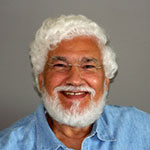November 3, 2019
When Muslims turned religion into science, the entire world benefited

During the eighth century CE, some 1300 years ago, Muslims established the unprecedented concept of "religious sciences." It was the first time in history that religion was treated as a discipline of higher learning, allowing scholars to research and teach its implications for every other academic subject.
The old traditions, in which only a few holy men knew about religion in depth, had given way to a new pedagogy based upon rigorous research and applying the scientific method; it resulted in a learning system that opened the door for every qualified student to excel.
Moreover, this new university system was financially government-supported so that classes could be offered free of charge. Public trusts were also established to help students pay for accommodation, books, supplies, and even clothing – no qualified student, no matter from how far away, would be denied or deprived of an equal opportunity.
Their course programs followed the Qur’an, whose teachings affirm that to seek knowledge in any subject is highly rewarded by the Almighty, both in this life and the hereafter.
Although the term “science” is now used mainly to denote empirical or measurable knowledge about the natural world through subjects such as biology, physics and astronomy, during the 700s CE the Arabic word ’lim (science) was used in reference to fact-based knowledge pertaining to any subject, including religion.
Anyone who had completed advanced studies in a specialized field and was accredited by a bona fide learning institution was called ’alem, or a scholar.
In fact, the familiar word “university” was derived from the Arabic Jameha and “chair,” or head of an academic department or faculty, was borrowed from the early Muslim tradition in which lecture halls were an integral part of mosques. The professor would teach seated on a chair, while students sat on the floor in a semi-circle.
The process back then was similar to what university students go through today; four or five years of undergraduate studies, followed by about five years of graduate research, culminating in a rigorous oral examination.
Successful candidates would then be qualified to teach, pursue advanced research, and write reference books. A decade or two later, if you became distinguished in your field, your peers might recognize your achievements by bestowing an honorary title such as Hogat-ul-Islam, a Grand Scholar of Islam.
Imam Al-Ghazali (1058-1111 CE) – a Sufi philosopher, theologian, jurist, and prolific author – was among those whose work was distinguished by this title, and one of my favorite historical teachers.
He wrote around 70 outstanding, even amazing books, most of which I have read. I intentionally describe them as “amazing,” not because of their specific content or scientific language, but also because he produced them at a time when there were no electricity, no printing presses, and no word-processing.
One of his most famous works is a multi-volume reference book called Ihya’ Ulum al-Din, or The Revival of Religious Sciences.
In another highly regarded volume, Incoherence of the Philosophers, he explained the contradictions in Greek philosophy, thus inspiring Francis Bacon (1561-1626) to write centuries later that “a little philosophy inclineth man’s mind to atheism, but depth in philosophy bringeth men’s minds about to religion,” as well as “knowledge is the rich storehouse for the glory of the Creator and the relief of man’s estate."
In two other books, Deliverance and The Alchemy of Happiness, Al-Ghazali founded the core of modern psychology some 700 years before Sigmund Freud (1856-1939), by treating it both as a science and a clinical medical subject.
A significant and often under-appreciated fact about Islamic higher learning of that era is that Muslims not only developed universities for their own faith communities, but also financially supported advanced scholarship among other religions.
The golden age of Jewish scholarship, for example, was achieved in Muslim Spain.
Moses Ben Maimonides (born in Cordoba, 1135 and died in Cairo, 1204) was an internationally celebrated Jewish scholar who wrote in Arabic, the scientific language of the era. I am proud to own an Arabic copy of his iconic Guide for the Perplexed.
So it is not surprising that early Muslim scholars devoted great efforts to developing and preserving classical Arabic, since it was the language in which the Qur’an was revealed. They produced abundant grammatical reference books on Arabic vocabulary, syntax, definitions, spellings, pronunciations, and the art of Qur’anic recitation to preserve its embedded music.
In addition to developing and expanding the sciences of the Qur’an and Hadith (the Prophet’s teachings), as well as Islamic law and theology, they wrote “how to” guides to aid laypeople and students alike. There was no topic that of the era that could not be addressed scientifically.
At the same time as religious sciences were flourishing, Islamic scholars branched out into subjects such as (among others) physics, chemistry, mathematics, music, literature, philosophy, astronomy, sociology, medicine, and physiology.
Today the oldest largest continuously operating and still-active university in the world is Al-Azhar, established in Cairo in 970 CE, and currently serving 500,000 undergraduate and graduate students from some 100 countries.
Over its 1050-year history it has graduated more than 30 million students – Imams, teachers, academics, kings, presidents, prime ministers – from nearly every continent on the globe; Asia, North and South America, Europe, Australia and New Zealand, even the Arctic.
And it all started because some pioneering Muslim scholars of the eighth century took the bold step of fulfilling the Qur’anic directive to learn without ceasing, to find a scientific basis for understanding their faith at a deeper level than ever before. Thanks to them, the entire world has benefited.








